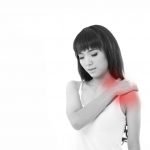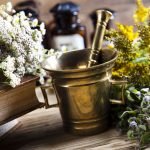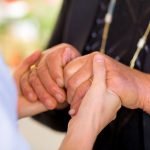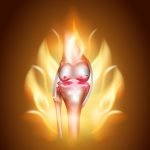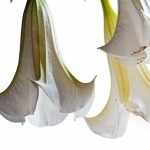The Perils of Pain
Sussanna Czeranko, ND
The pain or the pleasure is the test of our habits. – Aristotle
Life is short, the Art long, opportunity fleeting, experience treacherous, the crisis difficult. – Hippocrates, “Aphorisms”
Pain is the prayer of the nerve for better blood. – Simon Barach (1908)
Humanity has been plagued by the seemingly inevitable presence of pain symptoms, demarcating one disease from another. The prevalence of pain affects more people than we think: “The Gallup polling organization performed a survey on pain for the Arthritis Foundation and found that 9 in 10 Americans aged 18 and older (89%) suffer from pain at least once a month” (Gallup Survey, 2000). The odds that pain was also a big concern of doctors a century ago is pretty certain. However, how they helped their patients with painful presenting conditions differed from our current remedial approaches.
Allopathic Painkillers of Old
Like today, a century ago the more severe the pain, the more dreaded was the disease. For example, cancer strikes terror in those diagnosed, with it often provoking a sense of doom and defeat. As well, it is not surprising that diseases with a symptomology of pain are today as they were in the early 20th century, often associated with a drug regime that is outrageously expensive and accompanied by adverse effects. Unfortunately, some pain management protocols create symptoms worse than the pain they are treating. A case in point is the18th- and 19th-century drug, mercury chloride. It was the drug of choice and so popular that medical treatment was incomplete without it (Flannery, 2004). Whorton comments, “But as a mercury compound (mercurius chloride), [it] was toxic and, when given in repeated doses over a period of days or weeks, made the patient’s mouth painfully swollen, causing cheeks and gums to bleed and ulcerate, and teeth to become loose and fall out. In severe cases, the sufferer’s jawbone could be destroyed” (Whorton, 2002, p. 4).
That the drug therapies used by allopaths were toxic and painful did not go unnoticed by the early NDs. As Benedict Lust states, “The indiscriminate giving of so-called ‘headache remedies,’ which are most generally of coal-tar origin, is often followed by extreme physical depression and not infrequently by death from collapse due to heart failure. So well known is this fact that manufacturers are most careful to print on the label on every box, ‘Do not take more than two tablets, and do not repeat dose unless by advice of physician’” (Lust, 1928, p. 79). Lust goes on to say, “For thousands of years medical doctors have been educating the public into the false belief that poisonous drugs can give health. This belief has become in the public mind such a deep-seated superstition, that those of us who know better and who would like to adopt more sensible, natural methods of cure can do so only at the peril of losing [our] practice and reputation” (Lust, 1918, p. 426). Indeed, each group would claim supremacy for the efficacy of its treatments to conquer pain. Pain relief and questions of the safety of such practices were pitting one medical profession against the other during these early years in the development of naturopathic medicine.
Naturopathic Methods to Alleviate Pain
When we survey today’s landscape of current painkillers, we are not surprised nor do we refute that these drugs are powerful in suppressing pain. However, along with their potency comes an element of toxicity that is undeniable. The early ND had a non-drug arsenal that addressed the enigma of pain. They assembled and utilized their nature-cure tools, often beginning from the view articulated clearly by the Eclectic School of Medicine, for example, that “pain and disease, [were] like fever, a healthy or conservative power of nature to expel noxious agents or restore health” (1958, p. 22).
Compresses
The early American NDs relied confidently on nature cure therapies to aid in helping alleviate pain. Compresses and “poultices were used for the purpose of applying moisture with heat to relieve tension and pain and to relax the blood vessels. They [were] employed in the first stage of inflammatory processes” (Paul, 1924, p. 211). For joint pain and swelling, the joint compress was called upon. The temperature of the wet compress was 60-70°F for treatment of acute pain. In chronic joint affection, as Kellogg pointed out, the compress should be wrung dry out of very cold water and covered with several dry layers (Kellogg, 1903).
Puderbach reported later on a pain-killing massage oil for “rheumatism, gout, neuralgia, neuritis, lumbago, sciatica, etc. [that mixed] 25 g pure alcohol, 25 g camphor, 10 g menthol and 50 g olive oil” (Puderbach, 1927, p. 284).
In fact, rheumatism was a frequent source of pain 100 years ago. At the time, NDs theorized that rheumatism was a result of an accumulation of acids in the body or an imperfect elimination of uric acid. An excessive accumulation of acid took “the form of irritation of the nerves – often manifested in neuralgia, neuritis and headaches … or rheumatic pains in the muscles or joints” (Lust, 1927, p. 583). He went on to explain: “When rheumatism is treated by the salicylates, which are accepted remedies for this disease, not infrequently grave stomach disorders may follow” (Lust, 1928, p. 79). Lust and his colleagues made dietary recommendations to prevent the accumulation of morbid matter. “Careful regulation of the diet with the object of preventing putrefaction and the formation of purin(e)s, toxins, etc., is best accomplished by avoiding tea, coffee, tobacco, alcohol and malt liquors, and eating red meats in small quantities” (Pope, 1909, p. 390).
Dry and Wet Packs
Lust himself recommended several measures to relieve pain experienced by the rheumatics. One that delivered gratifying results was “the hot, dry pack … so that profuse sweating may be prolonged for a period of approximately five hours” (Lust, 1928, p. 583). Graham earlier had suggested that “the hot dry pack following the [hot bath] with a high colon irrigation and sleeping between blankets packed in hot water bottles so as to produce copious sweat is one that will add years to the life and comfort of people in their advanced years” (Graham, 1924, p. 76). Wool blankets were used because they readily absorbed the perspiration. Warm drinks were given to the patient during the warm bath; during use of the dry pack after perspiration began, cool drinks were given.
Pain was also met head on with the Wet Sheet Pack, also known as the Full Sheet Pack because a correctly performed wet sheet did not use excessive water. “The dread of a damp sheet is so intimately associated in the minds of the lay people with rheumatism and colds that the very name brings a shudder to the patient to whom it is novel, while, on the other hand, persons who are familiar with it abuse it by too frequent resort” (Baruch, 1892, pp. 23-7). Clark explained years later that “the linen sheet was large enough to completely cover the patient and was “wrung out as dry as possible, and there [was] sufficient moisture left after it has been wrung out for the purpose of treating the patient” (Clark, 1939a, p. 195). Instead of using linen or cotton sheets, blankets were used for pain conditions such as rheumatism, lumbago or sciatica. Clark recommended to his pre-World War II colleagues that “the blanket [be] wrung out of very hot water and wrapped around the patient, who is covered with dry blankets. If a sheet of waterproof is wrapped over the blankets it adds to the heating effect. Hot water bottles may also be placed around the patient under the outside blanket to produce extra heat. The patient should remain in the pack for an hour. Should the patient show signs of exhaustion, the pack should be removed at once” (Clark, 1939b, p. 223).
The Wet Sheet Pack was very popular with the water cure practitioners because it had “the widest range of use, and one seldom finds a case where it cannot be used” (Clark, 1939, p. 194). The packs created a state of constant moisture, which induced perspiration and the elimination of toxins. They were particularly valuable because their “beneficial effects were felt over a prolonged period” (Muller, 1948, p. 534).
Baths
The crusade during those days for pain relief and pain management even recruited pine needle baths. They were used for rheumatism and to alleviate nervous exhaustion. The baths could be prepared in various ways. Puderbach suggested, “Take a large spoonful of pine needle extract, dissolve in a pail of boiling water, and pour this solution into the prepared bath or take one or take one or two spoonfuls of pine oil, dissolve this in 100 grammes pure alcohol and add to the bath. … The bath should last 20 to 30 minutes. Some patients are troubled with the itch … in such cases take the patient out of the pine needle bath at once and give him a shower. … The temperature should be high for rheumatic ailments” (Puderbach, 1927, p. 243).
Bathing as a treatment for painful diseases was not overlooked in the British Isles in this period. Hartley-Hennessy reported in the middle of the last century that “the committee of the Bath Branch of the British Medical Association has issued an official list of disorders for which the bath treatment is used with marked success. They are as follows:
- Gout
- Rheumatoid and infective arthritis
- Osteoarthritis
- Spondylitis” (Hartley-Hennessy, 1950, p. 67)
Headache Treatments
Back in America, baths of a different kind were used for treatment of the pervasive, painful headache. A “headache is merely a symptom – not a disease,” Graham declared. “Seek out the disease of which the headache is a warning and strike at that” (Graham, 1924, pg. 329-330). For the relief of headaches, hot Sitz baths were employed. “When applying this treatment, the Sitz bath should be two-thirds filled with water of a temperature up to 108° to 110°F and the patient should lie in the bath for 10 to 15 minutes, the temperature of the bath being maintained by an additional supply of hot water. The feet too, should be immersed in hot water. … [Then the patient] plunges into another Sitz bath two-thirds filled with cool or cold water for 30 to 40 seconds … or [the body] is sponged down with cold water for about 2 minutes” (Muller, 1948, p. 533).
Although headaches had many causes, cold extremities were cited as one example of a cause of persistent headaches. The remedy for cold feet was immersing the feet in a basin of hot water for two minutes and then in cold for half a minute. This treatment was repeated 20-25 times. At the last cycle, the feet remained in the cold water for 2 minutes and were dried thoroughly with a rough towel. This was done once a day for several days (Graham, 1924, pp. 330-1).
Another migraine protocol involved a series of dry packs followed by wet packs. A prescription would include “a dry pack for half to one hour, followed by a cold sponge with water at a temperature of 70°F. After a few days of this treatment … the dry full pack for 30 minutes, followed by the dripping sheet at 70°F for 3 minutes, with vigorous friction. As soon as this point is reached, dispense with the dry pack and give the dripping sheet at 65°F for 3 minutes with good friction while the patient stands in a foot tub with water as hot as can be borne. … This treatment is generally administered in the morning, and the general wet pack at 65°F for one hour at bedtime” (Pope, 1909, pp. 390-1).
As they worked tirelessly to help patients deal with acute and chronic pain, the early NDs believed that it was “the violation of nature’s laws [that caused] lowered vitality, abnormal composition of blood and lymph, accumulation of waste matter, morbid materials and poisons” (Thirion, 1918, p. 275). For these pioneers, “the natural system for curing disease [was] based on a return to nature in regulating the diet, breathing, exercising, bathing and the employment of various forces to eliminate the poisonous products in the system and so raise the vitality of the patient to a proper standard of health” (Lust, 1918, p. 424). Their approach was to advocate for and support treatments for their patients predicated on a return to nature. Thirion explained in 1918 as World War I was drawing to an end, “… go for inspiration not to the murky atmosphere of the dissecting and vivisection rooms, not to the poison bottle, but to the field and forest. Learn to live in harmony with the laws of nature …” (Thirion, 1918, p. 277).
 Sussanna Czeranko, ND graduated from CCNM in 1994 and presently works at NCNM in the advancement department. She has incorporated her strong interests in balneotherapy and breathing therapies into a current project focused on bringing Nature Cure therapies back into naturopathy. The project involves the creation of a ‘Naturopathic Vitalism’ series incorporating balneotherapy, nature cure and the herbal arts. Jointly designed with Dr. Glen Nagel, the series culminates in July with the first annual “Physician Heal Thyself,” to be held at Breittenbush Hot Springs and open to everyone. Dr. Czeranko plans to teach carbon dioxide treatments beginning in summer.
Sussanna Czeranko, ND graduated from CCNM in 1994 and presently works at NCNM in the advancement department. She has incorporated her strong interests in balneotherapy and breathing therapies into a current project focused on bringing Nature Cure therapies back into naturopathy. The project involves the creation of a ‘Naturopathic Vitalism’ series incorporating balneotherapy, nature cure and the herbal arts. Jointly designed with Dr. Glen Nagel, the series culminates in July with the first annual “Physician Heal Thyself,” to be held at Breittenbush Hot Springs and open to everyone. Dr. Czeranko plans to teach carbon dioxide treatments beginning in summer.
References
The Arthritis Foundation: Pain In America: Highlights from a Gallup Survey, 2000.
(Author unknown): Basic concepts of the Eclectic School of Medicine, Journal of Naturopathic Medicine June:21-2, 1958.
Baruch S: The Uses of Water in Modern Medicine (V2). Detroit, 1892, George S. Davis Publishing.
Baruch S: The Principles and Practice of Hydrotherapy: A Guide to the Application of Water in Disease for Students and Practitioners of Medicine. New York, 1908, William Wood and Co.
Clark H: Curing with Water, Nature’s Path June:223, 226, 1939.
Clark H: Curing with Water, Nature’s Path, May:168,194-5, 1939.
Flannery MA: Civil War pharmacy, A History of Drugs. Baltimore, 2004, John Hopkins University Press.
Hartley-Hennessy T: The Waters of the Sun, Healing by Water or Drinking Sunlight and Oxygen. Durban, 1950, Essence of Health Publishing Co.
Kellogg JH: Rational Hydrotherapy. Philadelphia, 1903, F.A. Davis Company Publishers.
Lust B: The principles, aim and program of the Nature Cure system, Herald of Health and Naturopath XXIII(5), 1918.
Lust B: Rheumatism, its cause and cure, Nature’s Path XXXII(12):586-9, 1927.
Lust B: The danger of drugs, Nature’s Path March:78-9, 96-7, 1928.
Muller E: Value of water treatments for health, Nature’s Path, 1948, pp. 510, 533-4.
Paul GP: A Text-Book of Materia Medica for Nurses Including Therapeutics and Toxicology. Philadelphia, 1924, W.B. Saunders Co.
Pope C: Practical Hydrotherapy, A Manual for Students and Practitioners. Cincinnati, 1909, Cincinnati Medical Book Co.
Puderbach P: Medicinal baths and their preparation, Naturopath May; XXXII(5), 1927.
Puderbach P: Pain killing massage oil, Naturopath June; XXXII(6), 1927.
Thirion RV: Naturopathy or nature cure, Herald of Health and Naturopath, 1918.
Whorton JC: Nature cures, The History of Alternative Medicine in America. New York, 2002, Oxford University Press.




